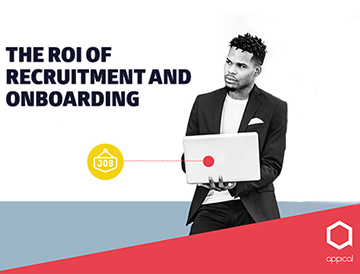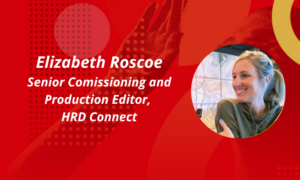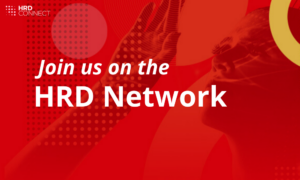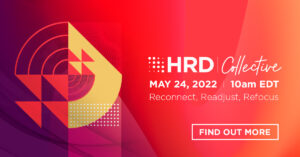The ROI of recruitment and onboarding
- 6 Min Read
When it comes to talent acquisition, most HR and recruitment teams are measured by the twin metrics of cost per hire and time per hire. The key measure for recruitment success is usually considered to be quality of hire, but most organisations find this hard to quantify. Is it the length of time someone stays […]
- Author: Rachel Montgomery-Young
- Date published: Jan 3, 2018
- Categories

When it comes to talent acquisition, most HR and recruitment teams are measured by the twin metrics of cost per hire and time per hire. The key measure for recruitment success is usually considered to be quality of hire, but most organisations find this hard to quantify. Is it the length of time someone stays with you, how productive they become within a certain period or milestones such as promotion?
Whatever measures are used, it seems that both the cost and time of hire are increasing, and vacancies are remaining unfilled for longer. The influential HR thinker Josh Bersin, of Bersin by Deloitte, writes “many studies show that the total cost of losing an employee can range from tens of thousands of dollars to 1.5-2X annual salary”.
Finding the talent that the business needs and improving the rates of retention, must be top of HR’s agenda.
Some of the costs of low retention often get overlooked. They include the impact of regretted attrition and the cost of a bad hire.
Impact of Regretted Attrition
With the cost per hire, and time per hire, rising it places more pressure on HR and recruiters to ensure that the candidates they do employ, get settled and productive quickly. Yet research often shows new hires are leaving their roles within the first one to two years. The turnover of new employees that businesses would rather keep or regretted attrition, is costly in both financial terms and for the upheaval and uncertainty it can cause with remaining team members.
Greenhouse Software undertook a case study in 2016 to look at ‘Employee Lifetime Value’ as a way to illustrate the potential costs of regretted turnover. As an example, they found that retaining a sales person for three years instead of two (together with better onboarding and management practices) can make a difference of $1.3 million in net value to the company over a three year period.
The Cost of a Bad Hire
Companies that are Committed to Investing in People Enjoy Better Economic Performance. This issue is real with 85% of HR decision makers admitting that their business had hired someone who proved to be a bad fit for the job; Leadership IQ estimated that at least 2 out every 5 hires turn out to be a bad hire within the first 18 months.
In trying to define a bad hire, the report considered what respondents felt made a good hire. For many it was the length of time a new employee stayed and their overall performance and satisfaction during that time, supplemented by contribution to overall performance of their team, and to the wider business effort. These factors take time to assess, so the identification of a hire as bad, by failing to settle or make the necessary contributions to business performance and success, often takes time to become apparent.
“2013 research from CEB had concluded that 1 in 5 hires are bad or regretted decisions, whilst Leadership IQ estimated that at least 2 out every 5 hires turn out to be a bad hire within the first 18 months.”
Figure 1.
Source: The ROI of Recruitment and Onboarding
The reasons why employees leave, or fail to work out, are often seen as a problem with the attraction, assessment and selection processes, however as we have seen in the last section many of the factors contributing to a poor match, or regretted hire, are more operational in nature. The day to day role, culture or team dynamics may not be as anticipated, but this will only be exacerbated if the new employee is ‘thrown in at the deep end’ and left to figure a lot of the rituals and internal working dynamics for themselves.
3 KEY WAYS IN WHICH THE ONBOARDING PROCESS CAN HELP WITH RETENTION
Start the process early
The problems that we have seen from demotivated and unhappy employee, and those that decide to leave early, can be eased by getting the new hire to feel part of the organisation from as soon as they have accepted the offer, otherwise known as pre-boarding. Some companies start during the interview phase – after all, one of those being considered will be your new employee! By getting people to complete their formalities and paperwork early, letting them connect to their new colleagues ahead of the first day, and beginning to ease them into the role before starting.
Connections Count
One of the most important factors in helping a new employee settle into their roles is having support from, and good relationships with, their new colleagues. All new hires need a supportive network to help show them the ropes and offer advice and guidance. By enabling people to build closer bonds with their new colleagues it will help foster greater social and cultural integration from the start. Give them access to platforms that will help them begin building those close partnerships and collaborations to help with learning and sharing.
Clear objectives and timelines
Before someone starts they need to know everything about the role that will help them succeed. No one should join without already having met the people that they will be working with, or at least connected to them and have had interaction. They should know what process and achievements will be expected of them within certain time frames – say 30, 60 and 90 days. And there should also be a clear timetable for feedback. Rather than the 3-month probationary review that most roles usually carry, today’s job seekers will expect more regular feedback on how they are settling in and where they should be focusing their efforts.
About the Authors
Appical changes the way in which businesses communicate with new employees. In a scarce candidate market, it is important to be distinctive; you want to retain talent. Appical offer customers real-time insight in employee data and feedback. This is the way to make onboarding fun.
Read Appical’s full whitepaper where they tell you everything you need to know when it comes to Talent Acquisition. This includes the cost of hiring, problems of unfilled vacancies, the impact of regretted attrition & more. To read the full whitepaper on The ROI of Recruitment and Onboarding, click here.










